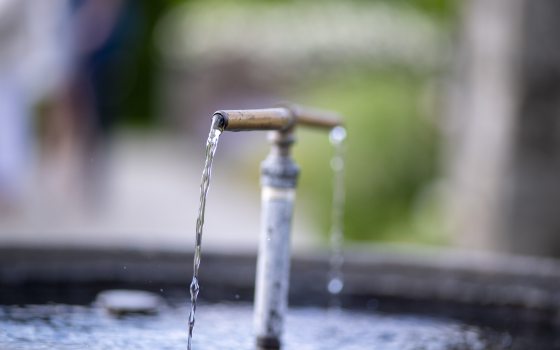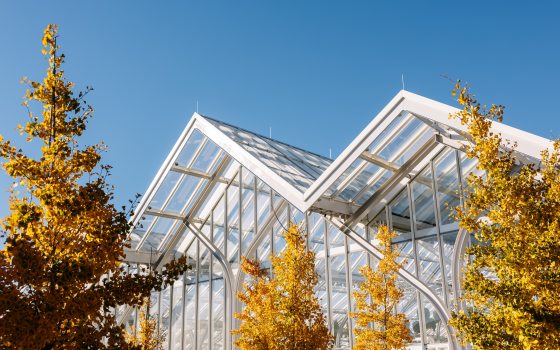The importance of water to life and the world we live in has been recognized throughout the ages: from Leonardo da Vinci’s insight that “water is the driving force of all nature”, to Benjamin Franklin’s “when the well is dry, we know the value of water”, to Jacques Cousteau’s “we forget that water and life cycles are one”. Yet for most of us living in a world where safe clean water is always available just a few steps away, it is easy to forget what a precious resource water is. From our irrigation systems and support of healthy waterways to our stormwater management practices and continuing approach to sustainability with Longwood Reimagined, water—and the responsible conservation of water—is vital at Longwood.
At Longwood, we understand the important resource water represents and the role it plays in our operations, including in our fountains and water features, indoor and outdoor irrigation, plant production in our greenhouses, onsite restaurants, and the domestic water services required by the approximate 1.8 million guests that visit us each year. As our Gardens have grown over the years, our leadership started asking in the 1980s, “how can we modify our water-use practices to be more sustainable?".
In response to that question, Longwood began looking for opportunities to reduce our overall water consumption and increase the reuse of water. Although we didn’t know it at the time, we were beginning a journey that 25 years later would come to be referred to by the water industry in the United States as “One Water”: an integrated approach to managing all water resources—drinking water, wastewater, stormwater, and even graywater—as a single, interconnected system (Water Resources Foundation).
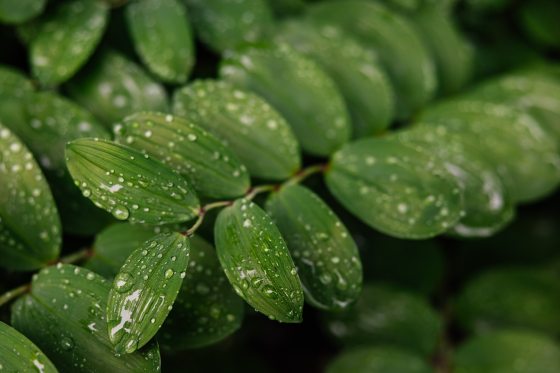
From when it falls on our Gardens, to when it enriches our plant life, to when it flows back into streams or evaporates back into the atmosphere, we consider the health and preservation of water in all its forms. Photo by Becca Mathis.
Our One Water journey began in 1985, and since then we have been developing and implementing measures to manage all types of water more sustainably and responsibly. While our One Water journey never ends, in recent years we have accomplished significant strides, which we proudly share with you here.
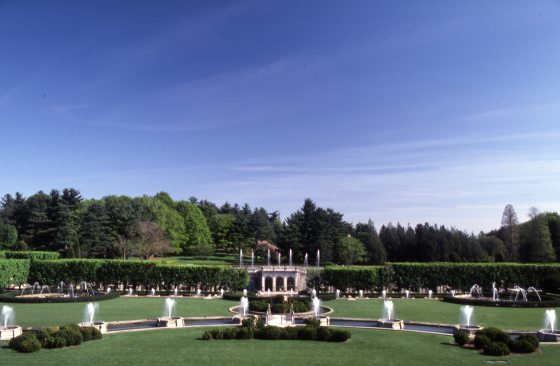
Take a look back at our iconic Main Fountain Garden in April 1985, the year we adopted our One Water philosophy. Water is an essential part of our signature aesthetic—and essential to our longevity. Photo by Larry Albee.
Let’s start underground—historically, all our water came directly from onsite groundwater wells. That water was pumped from the ground, utilized for its intended purpose, and whatever wasn’t directly consumed or lost to evaporation and infiltration made its way to surface water features and eventually left the Longwood Gardens watershed.
Our first step in our One Water journey was the design and permitting of an upgraded sewage treatment plant in 1985–86 to transition from stream discharge to land application of treated effluent. In 1987 we constructed a 9 million gallon treated effluent holding lagoon and 40-acre spray field. By incorporating the spray field into our water management practices, we were able to begin returning water to the site instead of discharging it off the Longwood property.
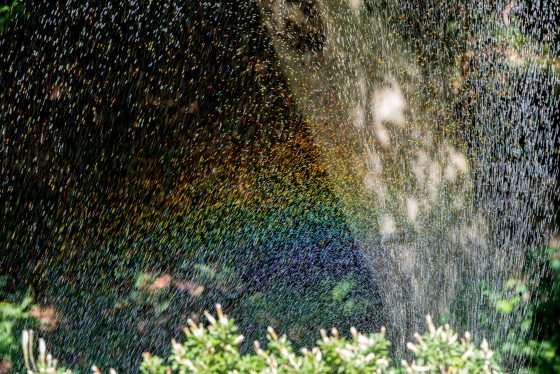
In many places on earth, groundwater is being depleted faster than nature can replenish it, so it is imperative to conserve groundwater to ensure a sustainable future for all human, plant, and wildlife. Photo by Hank Davis.
Design and construction of a site-wide Garden Irrigation System (GIS) began in 2002. The GIS allowed treated wastewater that would have previously gone to the 40-acre spray field to be further treated and then used for outdoor irrigation. Since 2003 we have reduced our demand on groundwater for outdoor irrigation by an estimated 3 million gallons annually. That equates to over 60 million gallons of groundwater savings to date!
For decades, we have utilized the latest technologies to avoid overwatering and be more exact with how much water we consume for plant care. In 2011 Longwood partnered with UgMO Technologies® to install an irrigation control system that monitors soil moisture in turf grass areas every 10 minutes using 168 in-ground sensors. By analyzing that information, we can reduce irrigation time, frequency, and water consumption. When we have an irrigation or rainfall event, we can also monitor how quickly the soil absorbs and subsequently releases the water. By continually monitoring our irrigation system and understanding the behavior of our soils we can more precisely control our water consumption and reduce our overall demand.
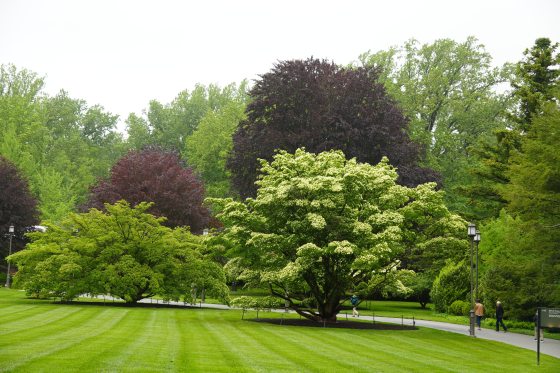
Our UgMO Technologies commercial irrigation system is utilized across 8.3 acres of irrigated turfgrass across the Gardens, including in our Cow Lot (pictured), Main Fountain Garden, East Conservatory Plaza landform, Italian Water Garden, and Rose Garden. Photo by Amy Simon Berg.
Treatment plant upgrades and modifications to our Water Quality Management Permit completed in 2023 and 2024 mean all our reclaimed water achieves a level of disinfection that is approved by the Pennsylvania Department of Environmental Protection for a wide range of uses. Most notably we can now utilize treated effluent for flush toilets, saving an expected 1 million gallons annually.
Though water brings our Gardens to life, it is also part of the natural beauty that we steward. More than 26 acres of our property are classified as aquatic, ranging from wetlands to ponds, and six small streams flow from the Longwood property eventually reaching the Delaware Bay. To ensure that every drop of water leaving our property is clean and capable of supporting life, we take a comprehensive approach to surface water quality—keeping in mind not only the health of our waterways but also the health of the vegetation within the riparian corridor along those waterways.
One key example of these efforts is our habitat reforestation work, where we plant native trees and shrubs along streams and wetlands to cool the water, filter runoff, stabilize banks, and provide essential habitat for native species. To date, almost 2,400 feet of riparian buffer, that was historically removed for agricultural purposes, has been restored.
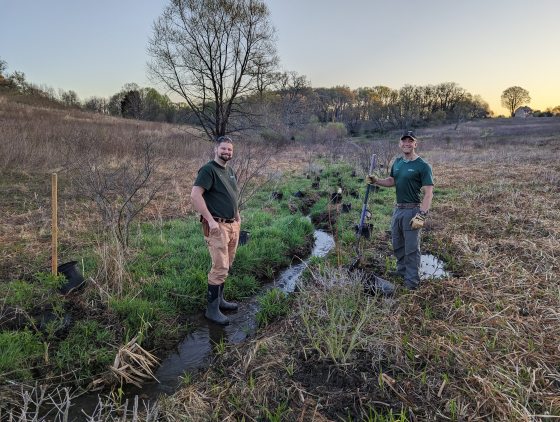
Senior Ecology Technician Joe Thomas (left) and Senior Land Stewardship Technician Ryan Pardue (right) plant a riparian buffer in the Meadow Garden. Photo by Pandora Young.
Streamside restoration is essential for our ecological future and human health as it protects water quality, mitigates flood risks, and supports biodiversity—all of which directly impacts public health by ensuring access to clean water and reducing waterborne diseases.
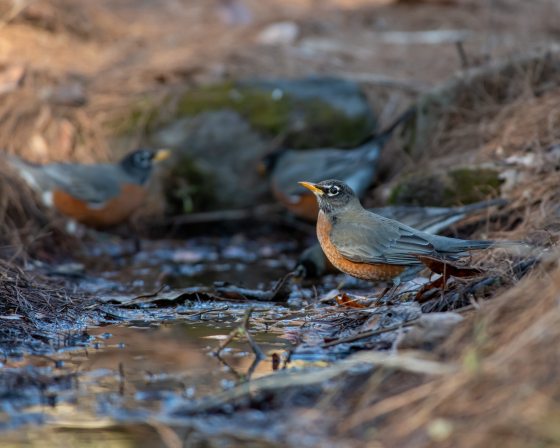
We also keep in mind the health of all the wildlife that call Longwood their home—such as this American robin. Photo by Hank Davis.
Now, let’s turn to the sky. Specifically, the rain. In conjunction with the opening of Longwood Reimagined in 2024, we introduced stormwater harvesting into our One Water repertoire. Utilizing a combination of dedicated downspouts added to the roofs of both the West Conservatory and The Grove administrative building, we are now collecting stormwater in underground storage tanks and using it for our operations.
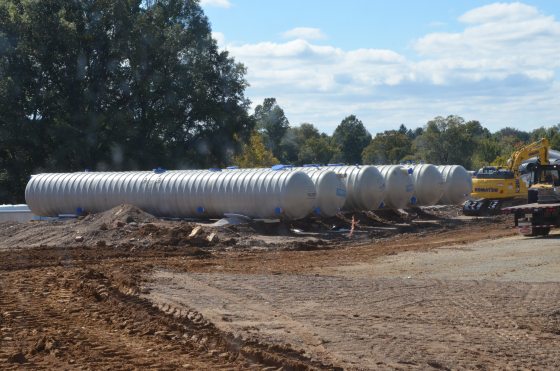
For our purposes, the harvested rainwater in the tanks is introduced as makeup water into water features, used for irrigation, or used to flush toilets. Photo by Amy Simon Berg.
The total groundwater savings realized through stormwater harvesting from the new West Conservatory and The Grove will be dependent on the timing, duration, intensity, and frequency of precipitation events, but initial estimates suggest that we will be saving 0.7 to 1 million gallons annually.
The benefits from our work with water management, habitat preservation and waterway restoration are positioning us to respond to a future of uncertain environmental conditions and climate change and be part of a global effort to care for our earth’s waterways … and our One Water journey is just the beginning.
